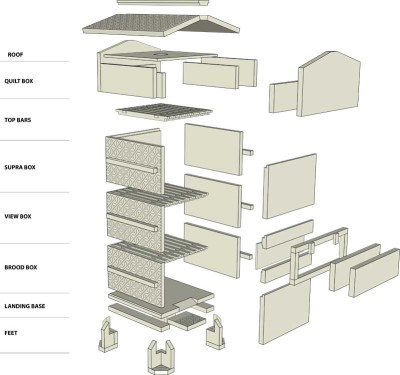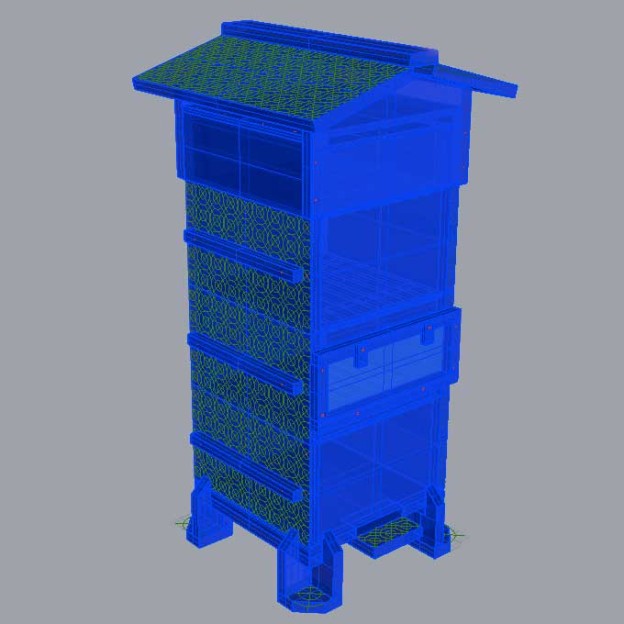specificities of a warré beehive
All info on sustainable beekeeping following the Warré method: beekeeping for all . More info can be found here: warre biobees.
Plans for building a Warré hive can be downloaded here : warre beehive plans. The site is a sort of manual if you want to keep bees with the Warré method, it provides a lot of information on specific tools, plans for hives and even a life, and techniques for using the Warré hives. Also there you can download the e-book: Beekeeping for All by Abbé Émile Warré, written in 1948.
We will adapt the Warré beehive to the open structures design-philosophy. We will install 2 hives the coming season 2013 in Valldaura and in Barcelona. Beginning of april we should be able to install the first prototypes at Valldaura (the green fablab) and on the rooftop of the barcelona fablab, and populate them with honeybees!
Warré/OpenStructures beehive design: do we need modifications with respect to the original plans? Which materials will we use? Is there a material more exiting than wood, but still functional with the fablab tools and the Warré beekeeping method? If we use the first-phase hives only this spring/summer season, they don’t need to be too thick (no winter in Barcelona) but they should be rainwater- sun- and wind-resistant. Insulation against hot spanish sun is interesting too. It’s usefull to include at least 1 window (with shutter) in the design, to monitor the bees easily without opening the hive.

© drawing fablab barcelona
open structures philosophy
How can we adapt the design of the warré hive to the Open Structures philosophy? The OS (OpenStructures) project explores the possibility of a modular construction model where everyone designs for everyone on the basis of one shared geometrical grid. It initiates a kind of collaborative Meccano to which everybody can contribute parts, components and structures. openstructures.net. Open structures is based upon a networked economy, interconnected by participants. Sharing, exchange, homegrown and DIY are important concepts that provoke new dialogues, emerging between producers and consumers, and that will result in new modes of artistic practices.
We have to take the products’ ecosystem into account: the balance between the hardware and the software, applying a shared design vocabulary based upon common rules and agreements. Designing becomes a collaboration.
Probably we will have to adjust the sizes a bit. We can check out several approaches, I will control if they are suitable in respect to sustainable beekeeping. The pluspoint of working with the Warré hive (and topbars) for now, is that this method is easy to learn others (at Valldaura) about beekeeping, to execute a basic monitoring and to insert some sensors over the season. The future organic beehives (for the Intelligent Beehive project) are not meant to use for real beekeeping – these hives are more a support for honeybee colonies to settle for pollination, while we monitor the colony’s development in relation to its surroundings. bee-monitoring-project




